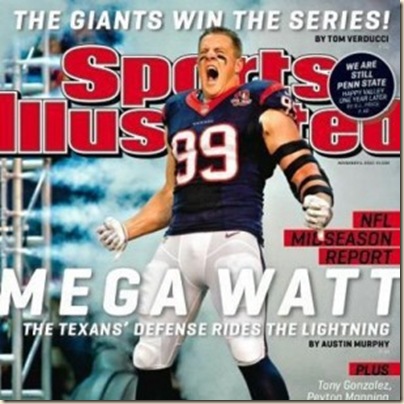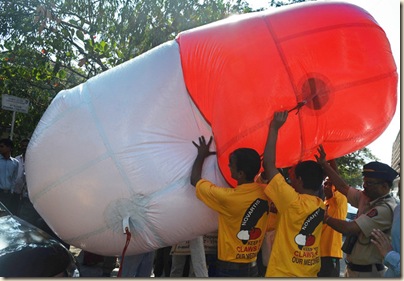In yesterday’s post, I wrote about foreign words with no exact counterpart in English.
That situation is bad enough, but when we all agree that communication is critical, how about words that don’t even mean what they mean?Our language has a whole slew of words that have totally opposite meanings depending on context.
English includes an interesting category of words and phrases called contronyms (also referred to as autoantonyms) — terms that, depending on context, can have opposite or contradictory meanings.
Just check this list assembled by Mark Nichol:
1. Apology: A statement of contrition for an action, or a defense of one
2. Aught: All, or nothing
3. Bill: A payment, or an invoice for payment
4. Bolt: To secure, or to flee
5. Bound: Heading to a destination, or restrained from movement
6. Buckle: To connect, or to break or collapse
7. Cleave: To adhere, or to separate
8. Clip: To fasten, or detach
9. Consult: To offer advice, or to obtain it
10. Continue: To keep doing an action, or to suspend an action
11. Custom: A common practice, or a special treatment
12. Dike: A wall to prevent flooding, or a ditch
13. Discursive: Moving in an orderly fashion among topics, or proceeding aimlessly in a discussion
14. Dollop: A large amount (British English), or a small amount
15. Dust: To add fine particles, or to remove them
16. Enjoin: To impose, or to prohibit
17. Fast: Quick, or stuck or made stable
18. Fine: Excellent, or acceptable or good enough
19. Finished: Completed, or ended or destroyed
20. First degree: Most severe in the case of a murder charge, or least severe in reference to a burn
21. Fix: To repair, or to castrate
22. Flog: To promote persistently, or to criticize or beat
23. Garnish: To furnish, as with food preparation, or to take away, as with wages
24. Give out: To provide, or to stop because of a lack of supply
25. Go: To proceed or succeed, or to weaken or fail
26. Grade: A degree of slope, or a horizontal line or position
27. Handicap: An advantage provided to ensure equality, or a disadvantage that prevents equal achievement
28. Help: To assist, or to prevent or (in negative constructions) restrain
29. Hold up: To support, or to impede
30. Lease: To offer property for rent, or to hold such property
31. Left: Remained, or departed
32. Let: Allowed, or hindered
33. Liege: A feudal lord, or a vassal
34. Literally: Actually, or virtually
35. Mean: Average or stingy, or excellent
36. Model: An exemplar, or a copy
37. Off: Deactivated, or activated, as an alarm
38. Out: Visible, as with stars showing in the sky, or invisible, in reference to lights
39. Out of: Outside, or inside, as in working out of a specific office
40. Overlook: To supervise, or to neglect
41. Oversight: Monitoring, or failing to oversee
42. Peer: A person of the nobility, or an equal
43. Presently: Now, or soon
44. Put out: Extinguish, or generate
45. Puzzle: A problem, or to solve one
46. Quantum: Significantly large, or a minuscule part
47. Quiddity: Essence, or a trifling point of contention
48. Quite: Rather (as a qualifying modifier), or completely
49. Ravel: To entangle, or to disentangle
50. Refrain: To desist from doing something, or to repeat
51. Rent: To purchase use of something, or to sell use
52. Rock: An immobile mass of stone or figuratively similar phenomenon, or a shaking or unsettling movement or action
53. Sanction: To approve, or to boycott
54. Sanguine: Confidently cheerful, or bloodthirsty
55. Scan: To peruse, or to glance
56. Screen: To present, or to conceal
57. Seed: To sow seeds, or to shed or remove them
58. Shop: To patronize a business in order to purchase something, or to sell something
59. Skin: To cover, or to remove
60. Skinned: Covered with skin, or with the skin removed
61. Splice: To join, or to separate
62. Stakeholder: One who has a stake in an enterprise, or a bystander who holds the stake for those placing a bet
63. Strike: To hit, or to miss in an attempt to hit
64. Table: To propose (in British English), or to set aside
65. Temper: To soften, or to strengthen
66. Throw out: To dispose of, or to present for consideration
67. Transparent: Invisible, or obvious
68. Trim: To decorate, or to remove excess from
69. Trip: A journey, or a stumble
70. Unbending: Rigid, or relaxing
71. Variety: A particular type, or many types
72. Wear: To endure, or to deteriorate
73. Weather: To withstand, or to wear away
74. Wind up: To end, or to start up
75. With: Alongside, or against
I think he cheated a little with 69 and 70 – two words describing the same act/condition in progress or completed. Otherwise, it’s a great list.
I’ll bet that if you think about it, you can add a word or two of your own.















 ," said Jamie Farrell, a seismology graduate student at the University of Utah. "The magma reservoir is at least 50 percent larger than previously imaged."
," said Jamie Farrell, a seismology graduate student at the University of Utah. "The magma reservoir is at least 50 percent larger than previously imaged."























